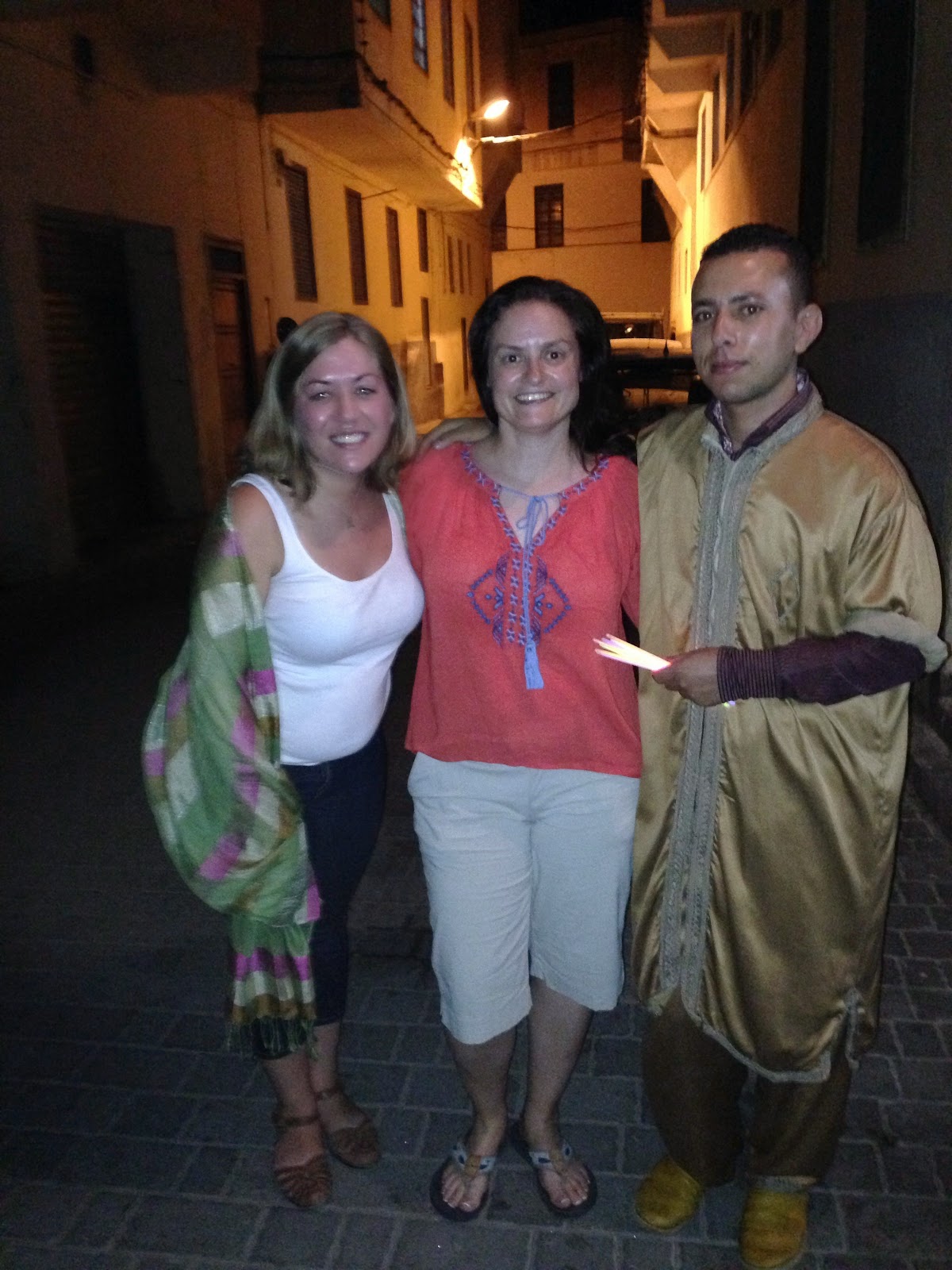The country of Morocco has an interesting cultural and linguistic history. This becomes apparent when you hear Moroccans speaking. One can't help, but hear an exotic lingunist composition of Arabic, French, Spanish and Tamazight or Berber. 99.1% Morocco's people are Berber and Arab, while only 7% are Christians and 2% are of Jewish ancestry. The Berber and Arab culture is deeply intertwined. The Moroccans fondly say scratch and Arab and you will find a Berber, scratch a Berber and you will find an Arab.

The indigenous people of Morocco are called the Amazigh. This group has lived in Northern Africa since about 3000 BC. The Amazigh people occupy the present day countries of Morocco, Algeria, Tunisia, Libya and Egypt. The Berber migration can be traced as far east as Yemen. The Amazigh people are referred to as Berbers. The term Berber was coined by the Romans and it was used to refer to any person who could not speak Latin or was a "Barbarian" meaning uncivilized. The word Amazigh means free people. In the south or desert areas of Mauritania, the Amazigh are called Tuaregs, which means independent people.
Morocco was settled by Hebrews and their influence spread across Northern Africa. Arabs settled in Morocco around 7th century though the true Arabization occurs in the 11th century. At this time most Amazigh converted to Islam. Today most Moroccans are Sunni Muslims. When we visited the mosque, (this is not usually allowed in Morocco) we learned that the Qu'ran is read in Arabic and not in the local dialect. There are three different dialects of the Amazigh language, Tarifit is used in the north, Tamazight in the middle Atlas region and Tashelhit in the south.

Today the language spoken in Morocco is Darija or Moroccan Arabic. It's a blend of Arabic, Tamazight, Hebrew and French. Many of the ending sounds heard in Darija words are short form Arabic or recited similar to slang words. Morocco was colonized by the French in the 20th century, during this time French became the official language. French was the language used by the elite during the protectorate period, and as a result many Moroccans learned it. Often Amazigh dilects are used in the home, Darija in the street, and French and Arabic in the schools. French is taught in the public schools and today continues to be the language of instruction there. Schools also instruct in Arabic. The northern parts of Morocco were once part of Spain and there many people speak Spanish and Tamazight languages. Most of the street signs feature both Arabic and French.
Today many Moroccans know how to speak Tamazight, but can not write it. In recent years students are learning to speak and wrtie it in schools, though traditionally it was an oral form of communication only. The colors of the Amazigh flag are physical geographic representations. At the top of the flag is the color blue to represent the north and the sea, the green in the middle is to represent the middle Atlas region, and the yellow at the bottom represents the desert people. The symbol in the center is man and it is drawn in red to mean courage.
Impressions: Many Moroccans want to preserve the Amazigh heritage and it is being taught in some schools. The classical Arabic language survives in the mosque or Masjid. For many Moroccans, Tamazight is used in the home, Darija in the street, and French and Arabic in places of business and tourist areas. More often than not when I attempt to use the little Arabic I know, the person with whom I am speaking replies in English.
Massalama!
The Traveling Educator

















































